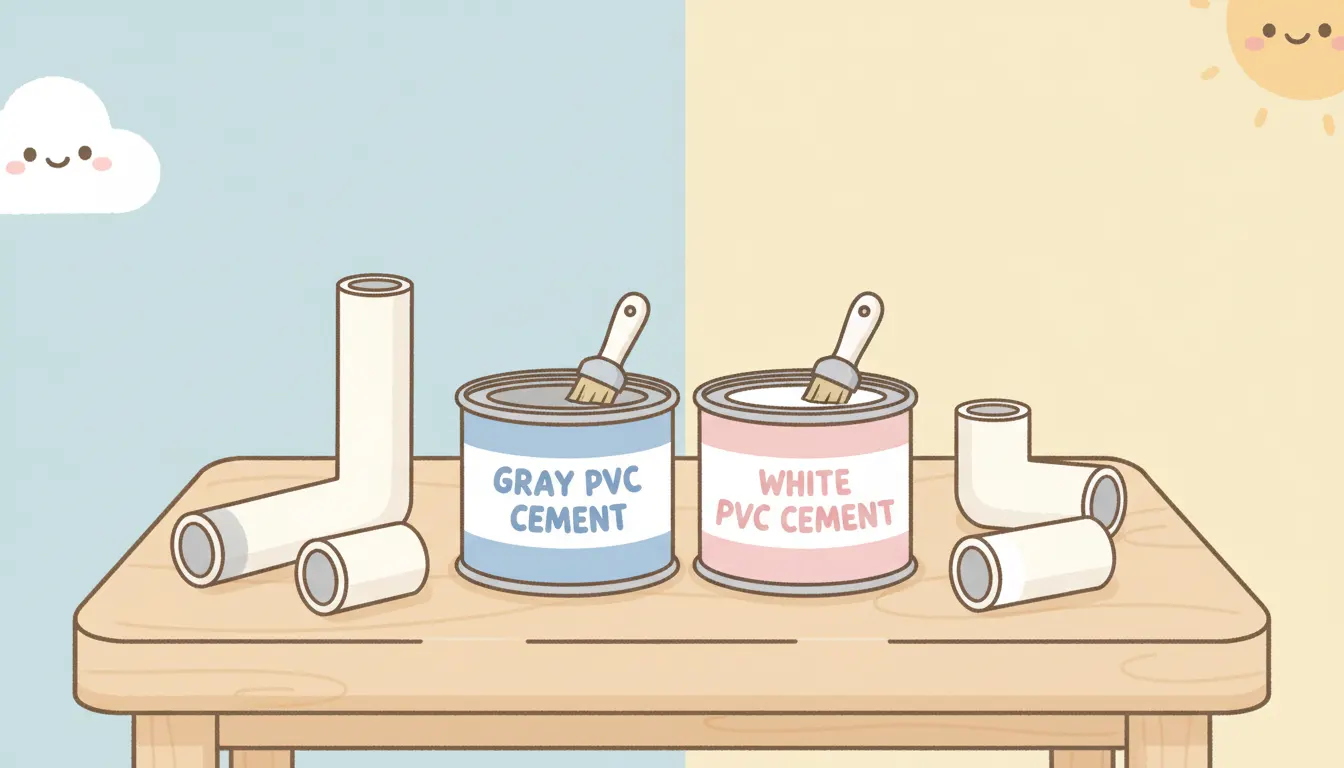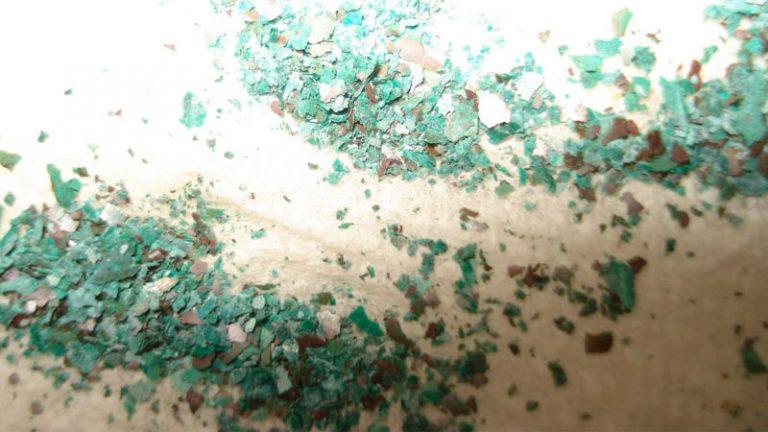Gray PVC Cement on White Pipe? The Shocking Truth You Can’t Ignore
You’re mid-project, white PVC pipe in one hand, a can of gray PVC cement in the other. A moment of hesitation strikes. The color difference creates a nagging doubt: can you actually use gray cement on white pipe? This is a common crossroads for DIYers and professionals alike, a question born from the fear of a failed joint, a hidden leak, and the nightmare of water damage.
The short answer is yes, you almost certainly can. But the most critical factor isn’t the color you see in the can; it’s the technical specifications you might be overlooking on the label. Understanding this distinction is the key to creating a solvent weld that is as strong as the pipe itself, ensuring a permanent, leak-proof connection.
You'll Learn About
Decoding the Colors: What Gray vs. White PVC Cement Really Means
The color of PVC cement is less about chemical compatibility and more about identification and application. Historically, colors were used by plumbing and electrical inspectors to quickly identify the type of cement and pipe used in an installation. Gray cement is traditionally associated with gray Schedule 80 PVC pipe, which has thicker walls and is used for industrial and high-pressure applications.
However, the underlying chemistry of all PVC solvent cements is the same. They work not as a simple glue, but as a chemical welding agent. The potent solvents in the cement soften and dissolve the top layers of the PVC pipe and fitting, allowing the plastic molecules to fuse as the solvent evaporates. The pigment is just along for the ride and doesn’t interfere with this crucial process when joining PVC to PVC.
Beyond Pigment: Viscosity is Key
What often distinguishes gray cement is its viscosity or “body.” Gray cements are frequently formulated as heavy-duty or medium-duty cements. This thicker consistency is designed to fill the slightly larger gaps found in large-diameter pipes, ensuring a robust and complete weld. A regular-bodied cement might be too thin for a 12-inch pipe, while a heavy-bodied gray cement provides the syrupy thickness needed for the job.
The Critical Factor Isn’t Color—It’s the ASTM Standard
Forget color for a moment and look for the most important code on the can: ASTM D2564. This is the standard specification published by ASTM International (formerly the American Society for Testing and Materials) for Polyvinyl Chloride (PVC) solvent cements. If the gray cement you’re holding is rated under ASTM D2564, it is certified for creating a chemical weld with PVC pipe, regardless of either product’s color.
This standard ensures the cement has the correct chemical composition to properly dissolve and fuse PVC plastic. Think of it as a guarantee of compatibility. As long as you are joining a standard white PVC pipe to a PVC fitting, a gray cement meeting this standard will create a bond that is just as strong, if not stronger, than a white or clear cement.

When You CAN Use Gray Cement on White PVC (The Common Scenarios)
For the vast majority of residential and commercial plumbing projects, using gray PVC cement on standard white Schedule 40 pipe is perfectly acceptable and often beneficial. The heavier body of most gray cements can provide a more forgiving application, helping to fill small imperfections and ensuring a solid joint.
Situations where gray cement is a great choice for white pipe include potable water lines, drain, waste, and vent (DWV) systems, and irrigation networks. Its robust, gap-filling nature makes it a reliable choice for creating durable, long-lasting connections that can withstand the rigors of daily use.
The Step-by-Step Guide to a Perfect Weld
The success of your PVC joint hinges more on proper technique than on the color of your cement. A sloppy application with the “perfect” cement will fail long before a meticulous application with a compatible alternative.
First, ensure your pipe is cut squarely and deburred on the inside and outside. Then, apply a quality PVC primer, like the ubiquitous purple primer, to both the outside of the pipe and the inside of the fitting. Primer is not optional; it aggressively cleans the surfaces and begins the chemical softening process, which is essential for a maximum-strength weld. After the primer, apply a liberal, even coat of your gray PVC cement to both surfaces and join them with a quarter-turn twist to spread the cement evenly. Hold the joint firmly for at least 30 seconds to prevent the pipe from pushing out of the fitting.
The One Situation Where You MUST Stop and Reconsider
There is one crucial exception where gray color should give you pause. Some gray cements are specifically formulated not for plumbing pipe, but for electrical conduit. While both are PVC, the demands are different. Some conduit cements may have different set times or chemical properties not suitable for pressurized water lines.
This is where a simple check of the can’s label saves the day. If the cement is intended for plumbing, it will clearly state its compliance with ASTM D2564 and its suitability for applications like potable water or DWV. If it’s for electrical use, it may reference different standards. For a deeper dive into this important distinction, it’s worth understanding the core differences between these adhesives. For more detail, consider reading about conduit glue vs PVC glue.
| Feature | Gray PVC Cement (Typical) | White/Clear PVC Cement (Typical) |
|---|---|---|
| Primary Use | Schedule 80, large diameter pipes, industrial applications | Schedule 40, DWV, general-purpose residential plumbing |
| Viscosity | Medium to Heavy-Bodied | Regular to Medium-Bodied |
| ASTM Standard | ASTM D2564 | ASTM D2564 |
| Common Application | High-pressure water mains, chemical lines | Residential drains, vents, potable water supply |
| Gap Filling | Excellent | Good |
| Set Time | Often slower, allowing more working time | Often faster |
Beyond the Basics: Pro Tips for Rock-Solid PVC Joints
Creating a dependable plumbing system goes beyond just picking the right cement. Environmental factors and the condition of your materials play a significant role. For instance, temperature drastically affects solvent weld cure times. In cold weather, the chemical reaction slows, requiring longer cure times before you can pressurize the system. In extreme heat, solvents evaporate faster, reducing your working time.
Another often-overlooked factor is the age of the cement itself. PVC solvent cement has a shelf life. If your can has been sitting open in the garage for two years and the contents are thick like jelly, do not use it. The solvents have likely evaporated, and it will not create a proper chemical weld, leading to certain failure. Always use fresh, fluid cement for a reliable connection.
Frequently Asked Questions (FAQ)
Is gray PVC cement stronger than white?
The strength comes from the formula, not the color. Because gray cement is often a medium or heavy-duty formula, it’s thicker and better at filling gaps in large-diameter pipes. This can result in a stronger overall joint in those specific applications, but for standard residential pipe, the difference in joint strength is negligible if proper technique is used.
Can I use gray PVC cement on CPVC pipe?
Absolutely not. This is a critical mistake. CPVC (the tan-colored pipe) is a different type of plastic designed for hot water and requires its own specific solvent cement (usually orange). Using PVC cement on CPVC will result in a weak bond that will fail, especially under hot water pressure.
Do I need primer with gray PVC cement?
Yes. Unless the cement can explicitly states it is a “one-step” or self-priming product approved by local code, you must use a primer. Priming is a non-negotiable step in the solvent welding process for both PVC and CPVC. It ensures the surfaces are perfectly clean and chemically prepared for fusion, which is vital for any plumbing material, including specialty pipes like those explored in discussions about flexible PVC for shower drains.
The Final Verdict: Color is a Clue, Not a Command
So, the next time you find yourself with a can of gray cement and a white pipe, don’t panic. The color is merely an indicator, often pointing to a heavy-duty, gap-filling formula that is more than capable of handling your job. Your focus should be on two things: confirming the cement meets ASTM D2564 for PVC pipe and executing the joint with flawless technique.
By prioritizing the science over the shade, you ensure that every connection you make is not just glued, but truly welded. This commitment to proper procedure is what separates a quick fix from a permanent, professional-grade solution that will stand the test of time.

